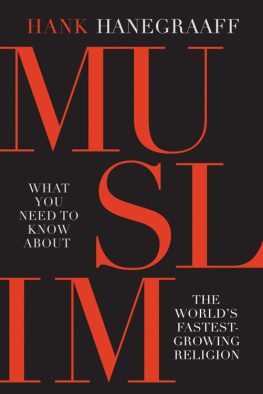INSIDE JIHADISM
THE YALE CULTURAL SOCIOLOGY SERIES
Jeffrey C. Alexander and Ron Eyerman, Series Editors
PUBLISHED
Triumph and Trauma, by Bernhard Giesen (2004)
Myth, Meaning, and Performance: Toward a New Cultural Sociology of the Arts, edited by Ron Eyerman and Lisa McCormick (2006)
American Society: A Theory of Societal Community, by Talcott Parsons, edited and introduced by Giuseppe Sciortino (2007)
The Easternization of the West, by Colin Campbell (2007)
Culture, Society, and Democracy: The Interpretive Approach, edited by Isaac Reed and Jeffrey C. Alexander (2007)
Changing Men, Transforming Culture: Inside the Mens Movement, by Eric Magnuson (2007)
Do We Need Religion? On the Experience of Self-Transcendence, by Hans Joas (2007)
A Contemporary Introduction to Sociology: Culture and Society in Transition, by Jeffrey C. Alexander and Kenneth Thompson (2008)
Inside Jihadism: Understanding Jihadi Movements Worldwide, by Farhad Khosrokhavar (2009)
FORTHCOMING
Making Los Angeles: How People Create Place Out of Ordinary Urban Space, by Christopher D. Campbell
Setting the Stage for a New South Africa: A Cultural Approach to the Truth and Reconciliation Commission, by Tanya Goodman
Meaning and Method: The Cultural Approach to Sociology, edited by Isaac Reed and Jeffrey C. Alexander
To my father and mother, to my wife
The author would like to thank Jeffrey Alexander, Hlne Monot,Beth Wright, Ann Delgehausen, and Carol Smith for the efforts they contributedto publishing this book. He would also like to thank Yale Universityfor the opportunity it gave him as a visiting professor to pursue his research.He also is grateful to the cole des Hautes tudes en Sciences Socialesand the Centre dAnalyse et dIntervention Sociologiquesfor providing him an academic environmentin which he could pursue his research.
First published 2009 by Paradigm Publishers
Published 2016 by Routledge
2 Park Square, Milton Park, Abingdon, Oxon OX14 4RN
711 Third Avenue, New York, NY 10017, USA
Routledge is an imprint of the Taylor & Francis Group, an informa business
Copyright 2009, Taylor & Francis.
All rights reserved. No part of this book may be reprinted or reproduced or utilised in any form or by any electronic, mechanical, or other means, now known or hereafter invented, including photocopying and recording, or in any information storage or retrieval system, without permission in writing from the publishers.
Notice:
Product or corporate names may be trademarks or registered trademarks, and are used only for identification and explanation without intent to infringe.
Library of Congress Cataloging-in-Publication Data
Khosrokhavar, Farhad.
Inside jihadism : understanding jihadi movements worldwide /
Farhad Khosrokhavar.
p. cm. (Yale cultural sociology series)
Includes bibliographical references and index.
ISBN 978-1-59451-615-3 (hardcover : alk. paper)
ISBN 978-1-59451-616-0 (paperback : alk. paper)
1. Jihad. 2. Islamic fundamentalism. 3. TerrorismReligious aspectsIslam.
I. Title.
BP182.K52 2008
363.325dc22
2008026672
Designed by Straight Creek Bookmakers.
ISBN 13: 978-1-59451-615-3 (hbk)
ISBN 13: 978-1-59451-616-0 (pbk)
Jihadism, a radical version of Islam, is wreaking havoc in almost every part of the world. A Jihadist group is any group, small or large, for which violence is the sole credible strategy to achieve Islamic ends.1 Al Qaeda is the major group within the Jihadist constellation. The nature of Jihadist groups is not the same all over the world. One can distinguish many types and many generations. We shall see that two major Jihadist movements exist, one rooted in the Islamic (mainly Sunni) world and the other in the West, mainly Europe. They are linked globally through many networks. But still, major differences separate the two movements, not least the ideology and the social roots of those involved in it. In Europe, there are uprooted people who are religiously separated from mainstream Islam, particularly the second-and third-generation sons (and marginally, daughters) of migrants. Even though many leaders are from lower middle classes, they still are culturally uprooted and feel socially stigmatized. In the Muslim world, there is more continuity in religious terms, and Islam is part of daily life, in spite of the emergence of secular minorities.
Jihadism is the largest violent utopian, anti-Western, and anti-democratic movement in the world. It has extended to all continents, with the partial exception of Latin America, where it is still a minor phenomenon. At the same time, it attracts many non-Muslims, who convert and adopt a Jihadist view of the world. It combines many ideological items of the extreme left (the fight against American arrogance and imperialism among others) and of the extreme right (the restoration of the virtuous family, sending women back to the task of motherhood, and eradicating all the social vices like homosexuality and alcohol consumption).
Jihadism indulges in extreme violence.2 One subcategory of its sympathizers goes to the extreme and promotes a sectarian, cultic representation of religion where death looms large. These groups can indulge in activities that lead not only to indiscriminate death but promote death as the central value of their version of Islam.
Jihadism has been faced with two types of denial. One consists in rejecting Jihadists as not being Muslims: those who reject them tend to be devout Muslims, outraged by the excesses in the name of Jihad. According to these pious people, Jihadists are not Muslims but mere criminals who disfigure Islam and distort its message and values. Another group believes that Islam is nothing but Jihadism and therefore its very nature prevents its integration within democracy. These are either people of Muslim background who reject it violently or Western ideologues who believe that the central message of Allahs religion is violence against unbelievers and rejection of secular values.
In my view both these groups are wrong. Jihadism is a movement based on a specific version of Islam, but it is only one way of looking at Allahs religion and certainly not the only one. There are many others that are much closer to political pluralism and tolerance, promoted by Islamic Reformists, who are in a minority position institutionally and culturally. The crisis of the Muslim worldthe domination of Muslim religious institutions by fundamentalist religious authorities and heedless, erratic American policies in the Muslim worldhave given Jihadism credibility in Muslims eyes.
Prominent in Jihadism is a warrior culture that was first established in Islam in its first century and then developed during its conquest of other lands, including the Byzantine and Persian Empires, North Africa, and part of Spain. The tradition of Jihad became much less combative after the establishment of the Muslim empire in its stabilized state. This tradition was not actively renewed until European colonialism, when Muslim leaders invoked the necessity to fight against Western invaders as an individual duty, incumbent upon every able-bodied believer (










